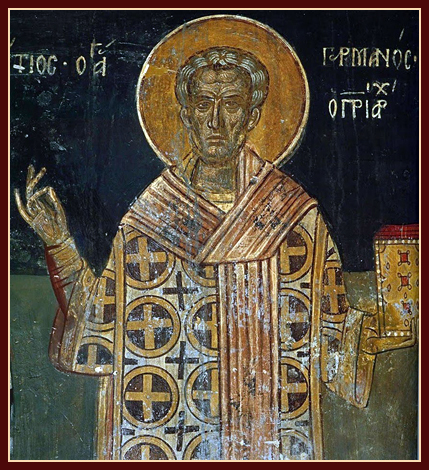Saint Germanus the Patriarch of Constantinople

Because of the sanctity of his life, Germanus was made bishop in the city of Cyzicus. St Germanus rose up in defense of the Orthodox Faith against the iconoclast heretics. He was later made Patriarch of Constantinople. St Germanus continued to stand up against the iconoclasts and to their spokesman, the heretical emperor Leo III the Isaurian (717-741), but the contest was unequal. He was forced to put his omophorion upon the altar table in the sanctuary, and to resign the archpastoral throne. Then the enraged emperor, who accused the Patriarch of heresy the day before, sent soldiers, who beat the saint and threw him out of the patriarchal residence. St Germanus was Patriarch for fourteen years and five months.
He went to a monastery, where he spent the remaining days of his life. The holy Patriarch Germanus died in the year 740, at age ninety-five, and was buried in the Chora monastery in Constantinople. Afterwards, his relics were transferred to France.
At the Seventh Ecumenical Council (787), the name of Patriarch Germanus was included in the diptychs of the saints. He wrote a “Meditation on Church Matters or Commentary on the Liturgy;” also an explanation of the difficult passages of Holy Scripture, and another work on the rewards of the righteous after death.
His important work on the various heresies that had arisen since apostolic times, and on the church councils that took place during the reign of the emperor Leo the Iconoclast, provides a wealth of historical information. There are also three letters from the Patriarch about the veneration of icons, which were read at the Seventh Ecumenical Council.
His other works include hymns in praise of the saints, discourses on the Feasts of the Entry into the Temple, the Annunciation and the Dormition of the Most Holy Theotokos, and on the restoration of the church in honor of the Placing of the Venerable Zone of the Most Holy Theotokos.
